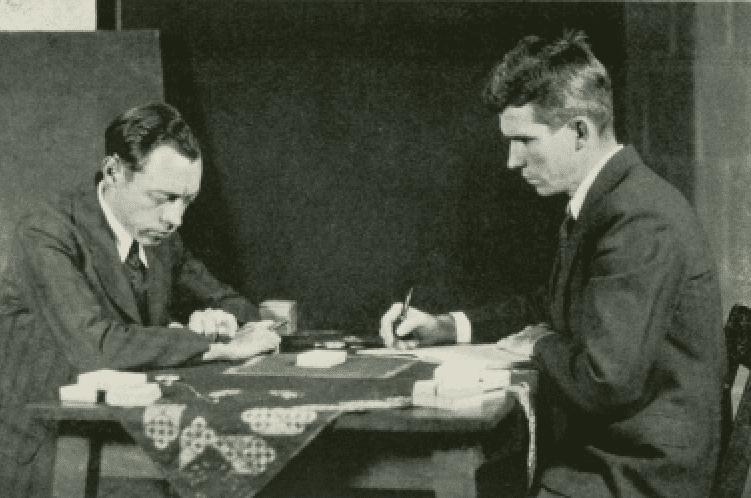Welcome to Star Wars week here at the Athens Science Observer. To help celebrate May the 4th – Star Wars Day – we wanted to take a look at the real life science of that galaxy far far away.
There's a scene in Star Wars: Episode I – The Phantom Menace in which the Jedi Council is testing the strength of Anakin Skywalker's Force powers. In the scene, images appear on a screen before Mace Windu, and then Anakin uses his ESP-like abilities to ‘see' what is on it.
Remember that scene? No? Don't worry – neither did I. It took our beloved ASO editor – someone strong in the Force – to remind me of anything from that mostly-forgettable movie.
While Episode I couldn't live up to the hype, that interaction between Anakin and Master Windu has played out numerous times – not between Jedi, but with academic researchers looking for scientific evidence of ESP.
Search Your Feelings
ESP, or extrasensory perception, is the idea that people can receive information with their mind and not through one of the five senses (e.g., sight, hearing). The first studies on ESP began with J. B. Rhine, a psychology professor at Duke University, who is widely considered to be the ‘Father of Modern Parapsychology'.
His studies, conducted in the 1930s, were primarily done under controlled conditions in a laboratory using a specially-designed set of cards called Zener cards. These cards featured five designs: a circle, a cross, wavy lines, a square, and a star. Five sets of these cards (25 total cards) made up a deck. The researcher would draw a card, and the test subject would attempt to ‘see' which design was on that card. Getting the design right more often than chance (more than 20% of the time) would be considered evidence of ESP.

By 1940, 33 experiments had been completed, and 27 of them had statistically-significant results – seemingly solid proof for the existence of ESP. However, the evidence began to fall apart by the end of the decade. Many other psychology experts tried to replicate Rhine's experiments and none were able to reach the same results. It was eventually discovered that sensory leakage, information transferred through normal means (e.g. visual cues, sounds), in an ESP experiment accounted for all of Rhine's results. Subjects in his experiments were able to see through the backs of the cards or notice clues in the experimenter's voice.
Therefore, it was a bit of a surprise when a study in 2011 claimed to have found strong evidence for ESP. Participants of the study were able to identify the position of a hidden picture more often than by chance alone. The study was conducted by Daryl Bem, a well-regarded psychologist at Cornell, and was published in one of the field's top journals. It seemed to be well done, as there were no obvious flaws in its design.
Was this actual proof for ESP? Are there actually people out there with Force-like powers? The answer appears to be no. Groups of scientists have tried to replicate the study's results, but none of these studies have been successful. The more likely culprit for the positive result is nothing more than simple luck.
A Disturbance in the Force?
So, does this incorrect result mean there is something wrong with the scientific process? Obviously, no!
So, does this incorrect result mean there is something wrong with the scientific process? Obviously, no! This is exactly how science is supposed to work. A study is reevaluated and scrutinized to see if its results continue to hold up. This process, called replication, is a hallmark of the scientific process.
If there is anything to learn from this latest study on ESP, it's that it highlights the importance of publishing negative results and uninteresting studies. While Master Yoda may not agree with the sentiment (“there is no try…â€), trying, failing, and retrying is often how science works best. If only something as worthwhile could be gained from watching Episode I.
About the Author
 A transplant from Virginia (Hoos!), Greg Evans is a graduate student in the Plant Biology department at the University of Georgia studying defense tradeoffs in morning glories. When he's not tangled up in weeds, Greg enjoys Ultimate Frisbee, bowling, and board games. He can be reached at gevans@uga.edu. More from Greg Evans. A transplant from Virginia (Hoos!), Greg Evans is a graduate student in the Plant Biology department at the University of Georgia studying defense tradeoffs in morning glories. When he's not tangled up in weeds, Greg enjoys Ultimate Frisbee, bowling, and board games. He can be reached at gevans@uga.edu. More from Greg Evans. |
About the Author
- athenssciencecafehttps://athensscienceobserver.com/author/athenssciencecafe/April 17, 2020
- athenssciencecafehttps://athensscienceobserver.com/author/athenssciencecafe/April 12, 2020
- athenssciencecafehttps://athensscienceobserver.com/author/athenssciencecafe/April 3, 2020
- athenssciencecafehttps://athensscienceobserver.com/author/athenssciencecafe/March 30, 2020







